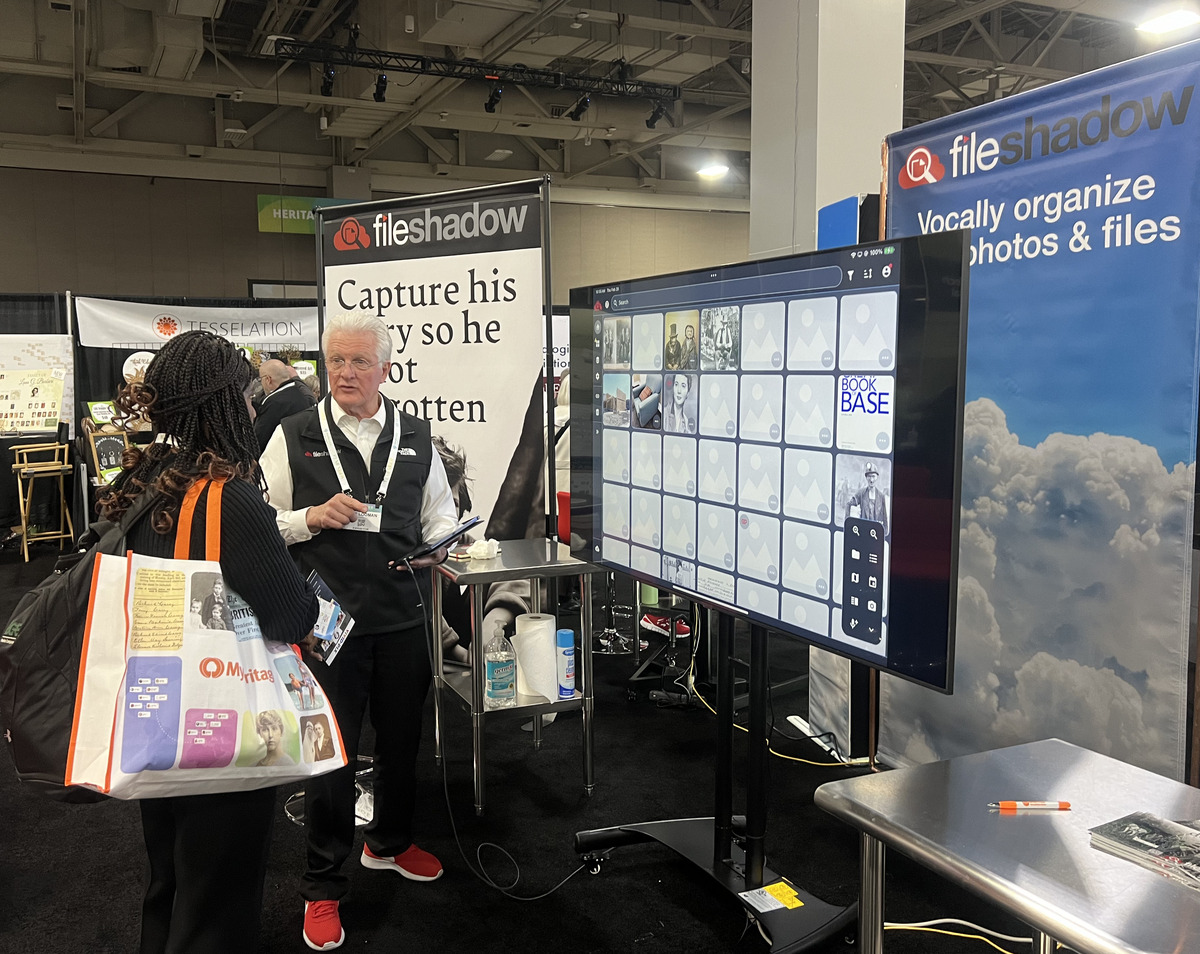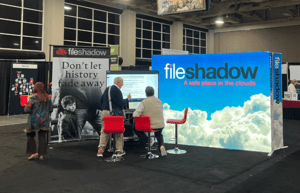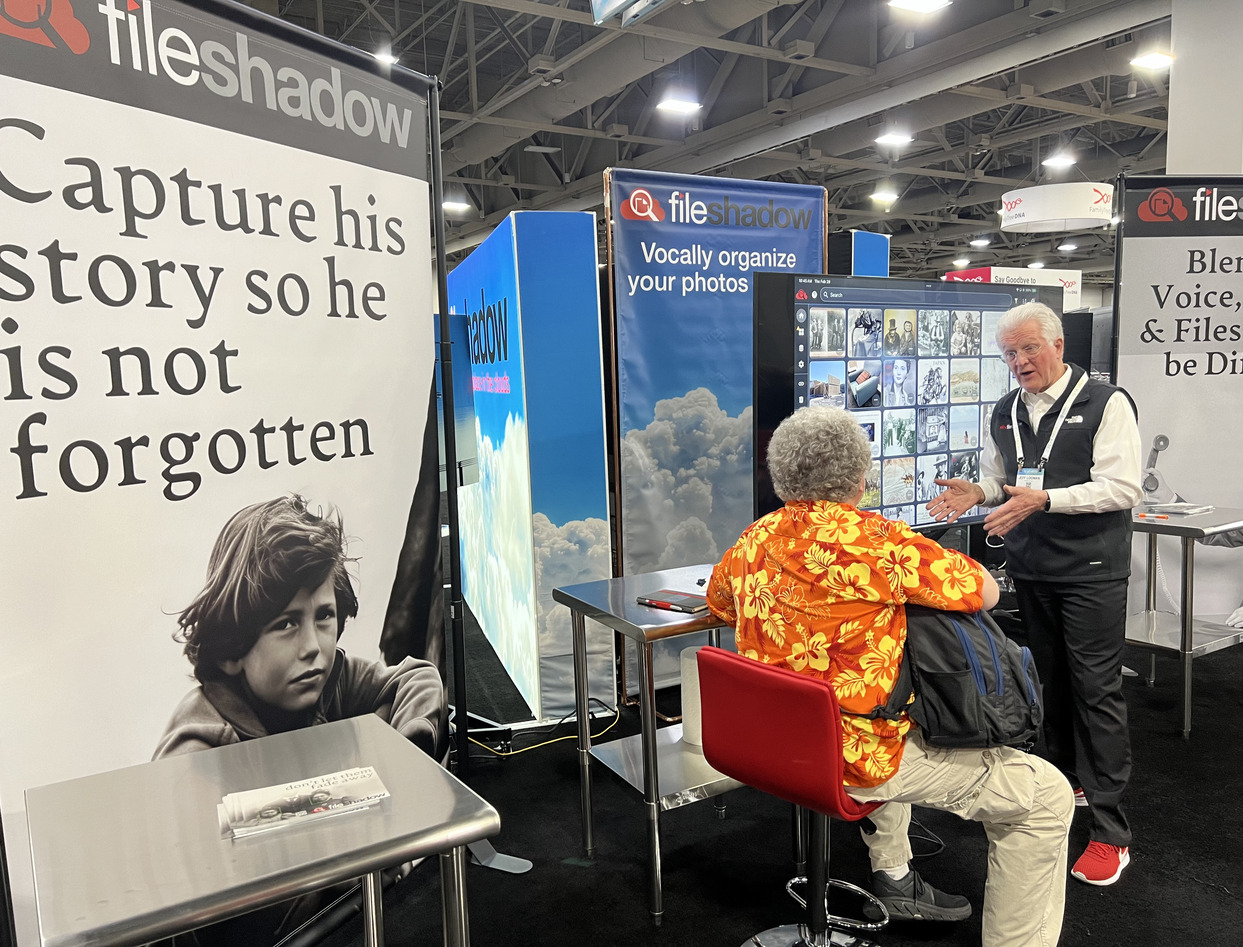

Today at RootsTech, FileShadow announced the launch of new features for genealogists and family historians: Person Detection and Custom Object Identification in images. These features help genealogists to identify people in photographs, making them searchable when organizing photos around an individual.
 The Person Detection feature leverages advanced technology so users can tag faces in photographs. With this feature, users select a photo in FileShadow and click “Detect Faces.” The app then identifies faces with a red outline box. Users can click on one of the faces and assign a name/title to that face. The system will add that name/title as a tag for future searches and tagging.
The Person Detection feature leverages advanced technology so users can tag faces in photographs. With this feature, users select a photo in FileShadow and click “Detect Faces.” The app then identifies faces with a red outline box. Users can click on one of the faces and assign a name/title to that face. The system will add that name/title as a tag for future searches and tagging.
“FileShadow goes beyond AI-based object identification,” said Tyrone Pike, FileShadow’s president and CEO. “FileShadow now can identify and name people in photographs. Of course, everything is searchable, so finding people later will be easy. FileShadow also provides a way to create custom regions so objects in a photograph like horses, dogs or buildings can be named.”
 Identifying people can help document a person in one or more of a user’s photos for future reference. The feature is especially helpful for creating collections of a person, such as 20 photos of grandma at her old house or pictures of a particular ancestor. While the system can identify faces like portrait face identification in a camera, it does not perform facial recognition and search for photos of that face. Faces need to be tagged to create future searches. Face tags are available only for the account owner.
Identifying people can help document a person in one or more of a user’s photos for future reference. The feature is especially helpful for creating collections of a person, such as 20 photos of grandma at her old house or pictures of a particular ancestor. While the system can identify faces like portrait face identification in a camera, it does not perform facial recognition and search for photos of that face. Faces need to be tagged to create future searches. Face tags are available only for the account owner.
FileShadow is a Provo-based digital asset management service that aggregates files from a long list of commonly used sources such as Adobe Creative Cloud, Adobe’s Lightroom solutions, Box, Dropbox, Google Drive, iCloud, OneDrive, Slack, Microsoft Exchange, Office 365, Gmail, iCloud Mail, Yahoo! Mail and IMAP servers. It also aggregates files from local storage (macOS, Windows Desktops, Windows Virtual Desktops) and mobile devices (iOS and Android); and network and direct-attached storage (NAS/DAS) devices.
With FileShadow, users can post content through the FileShadow Website Collection Manager. Website Collections can be shared with anyone, regardless of where they are located or using FileShadow. Anyone inside or outside the FileShadow system can contribute files to Website Collections.
“FileShadow is also changing the way metadata is shared with other applications,” Pike said. “We recognize that historians use several applications to get and stay organized. When they identify a person, add a description, or set a geolocation, that information is written to the file when downloaded and available for other applications.”
 Over the past year, FileShadow has participated in the Family History Metadata Working Group (FHMWG), a cooperative effort among software companies, nonprofits and experts to enable the consistent capturing, sharing, interoperability and preservation of family history metadata in digital media. Together, the group has created the site SaveMetadata.org to document its efforts toward defining the minimum metadata required for family history purposes.
Over the past year, FileShadow has participated in the Family History Metadata Working Group (FHMWG), a cooperative effort among software companies, nonprofits and experts to enable the consistent capturing, sharing, interoperability and preservation of family history metadata in digital media. Together, the group has created the site SaveMetadata.org to document its efforts toward defining the minimum metadata required for family history purposes.
SaveMetadata welcomes additional entities to learn more at RootsTech 2024 at 9 a.m. on Friday, March 1, in Classroom B on the Main Floor of the Salt Lake FamilySearch Library (35 N. West Temple).
Since RootsTech 2023, FileShadow has upgraded its map view, enabled attaching files as a group, improved folder navigation, generated FHMWG read/write definitions, created split view navigation, and launched Facebook Connector.
Visit FileShadow at booth #307 in the exhibit hall during RootsTech, and view the video below.
For a free 30-day trial of FileShadow, visit fileshadow.com.

